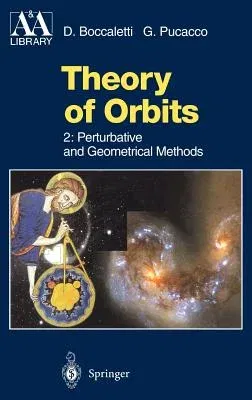Dino Boccaletti
(Author)Theory of Orbits: Perturbative and Geometrical Methods (1999. Corr. 2nd Printing 2002)Hardcover - 1999. Corr. 2nd Printing 2002, 19 November 1998

Qty
1
Turbo
Ships in 2 - 3 days
In Stock
Free Delivery
Cash on Delivery
15 Days
Free Returns
Secure Checkout

Part of Series
Astronomy and Astrophysics Library
Part of Series
Theory of Orbits
Part of Series
Astronomy and Astrophysics Library,
Print Length
423 pages
Language
English
Publisher
Springer
Date Published
19 Nov 1998
ISBN-10
3540603557
ISBN-13
9783540603559
Description
Product Details
Authors:
Book Edition:
1999. Corr. 2nd Printing 2002
Book Format:
Hardcover
Country of Origin:
US
Date Published:
19 November 1998
Dimensions:
24.23 x
16.33 x
2.97 cm
ISBN-10:
3540603557
ISBN-13:
9783540603559
Language:
English
Location:
Berlin, Heidelberg
Pages:
423
Publisher:
Weight:
762.03 gm